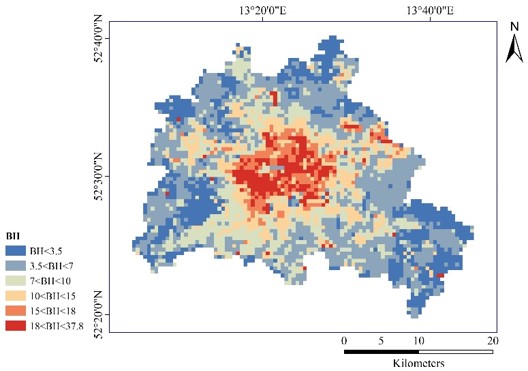A new paper by Hannes Taubenböck and his team titled “Seasonal and Diurnal Variation of Land Surface Temperature Distribution and Its Relation to Land Use/Land Cover Patterns” has been published in the International Journal of Environmental Research and Public Health. From the abstract: “The surface urban heat island (SUHI) affects the quality of urban life. Because varying urban structures have varying impacts on SUHI, it is crucial to understand the impact of land use/land cover characteristics for improving the quality of life in cities and urban health. Satellite-based data on land surface temperatures (LST) and derived land use/cover pattern (LUCP) indicators provide an efficient opportunity to derive the required data at a large scale. This study explores the seasonal and diurnal variation of spatial associations from LUCP and LST employing Pearson correlation and ordinary least squares regression analysis. Specifically, Landsat-8 images were utilized to derive LSTs in four seasons, taking Berlin as a case study. The results indicate that: (1) in terms of land cover, hot spots are mainly distributed over transportation, commercial and industrial land in the daytime, while
wetlands were identified as hot spots during nighttime; (2) from the land composition indicators, the normalized difference built-up index (NDBI) showed the strongest influence in summer, while the normalized difference vegetation index (NDVI) exhibited the biggest impact in winter; (3) from urban morphological parameters, the building density showed an especially significant positive association with LST and the strongest effect during daytime.”
read the full article here:








